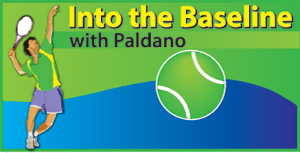Exhibition of Sensational Tennis
With all its noise, heat and humidity which players were not really happy with, the US-Open was not short of good Tennis. In fact, the Tennis was very good, even up to the quarterfinals, in a 128 draw. For most of the players, Hard Courts are their home surface on which they grew up. Naturally, they played well and effectively.
The uncomplicated bounce of the ball on the uniform Hard-Courts surface made coordination and timing easy for good ground-strokes. Players were reluctant to approach the net, unless supported by speed or, after an out of reach groundstroke. With players evolving tactically, stroke maturity and physically, the overall pace is getting faster in Tennis. In this context, athleticism in Tennis, like in all sports, can give the winning edge. It is more true on Hard Courts.
Women in New York
Women’s Tennis, at present, is extremely open. Top 10-ranked players started to fall off from the very 1st Round. By the time the quarterfinals came on Wednesday of the 2nd week, the famous had their names out of the draw. The quarters saw only 2 from the top 10, Sloane Stephens and Karolina Pliskova.
The playing efficiency difference of players in the top 100 clubs is marginal, especially in the Women’s professional circuit. The ‘annual validity’ of points in ranking does not reflect the current form of players. Seeding, which uses, this tends to be often invalid.
Sloane Stephens, currently No.3 in WTA ranking, has overcome her constant injury issues she was subjected to. From what could be seen, the body muscular mass is protecting her from injuries. She won the US-Open title last year. US Tennis can be proud of having 3 names in the quarterfinals – Serena Williams, Sloane Stephens and Madison Keys. Anastasija Sevastova is from Latvia and she beat Sloane Stephens in the quarters.
Along with USA and Western Europe, the Baltic States and Eastern Europe are dominating Women’s Tennis. The last 8 in New York came from these countries. They have developed a game style which suits them. They defy the traditional tactical approach and use enormous power based ground-strokes and drop-shots. Very rarely they are seen at the net with good volleys. Asiatic body cannot cope with this game plan.
More was expected from Simona Halep, Caroline Wozniacki, Angelique Kerber, Petra Kvitova, Caroline Garcia, Jelena Osterpenko, Julia Georges and Svitolina, because of the high ranking position they occupy. For them, this is the 8th straight month of competition. They are burnt-out and have lost the fight in them. Some, with over US$ 6 million in prize money in 2018, are not fighting. That level of reward dampens motivation to win.
The Returnees
Among Women, injuries, suspension and others make players go out of the professional circuit. Their absence hurts them when it comes to income. Serena Williams, Maria Sharapova, Wozniacki, Kvitova, Azerenka and Cibulkova were top 10 players. It looks difficult for them to raise their game to dominate again. Professional players want to hang in when the going is good. When this gets disturbed, they need to rebuild it. Which is easier said than done. Very few among Women have survived after 32. A good number of top players are approaching that age marker now.
Men – Del Potro’s run
From the top 10 and from known names, Federer, Wawrinka, Zverev, Anderson, Dimitrov and Goffin were out before the quarters. The lonely Australian John Millman, ranked 55 in the ATP list, eliminated Roger Federer in 4 Sets. Millman never looked beaten even after losing the 1st Set. Federer could not raise his game to beat him. Millman, on the other hand, showed how quick a player can be on court. He is the 1st Australian in the US-Open after a long time.
 Millman’s speed of movement denied Federer court space for targets and time to execute precision shots, which are a critical part of Federer’s formula to win. The strain to sustain his game showed, with the match lasting 3 hrs. 35 min. At 37, Federer found it to be tedious.
Millman’s speed of movement denied Federer court space for targets and time to execute precision shots, which are a critical part of Federer’s formula to win. The strain to sustain his game showed, with the match lasting 3 hrs. 35 min. At 37, Federer found it to be tedious.
The player who looked good and is still peaking is Juan Martin Del Potro of Argentina. He too is on a comeback spell and is rationing his appearances. He, like Federer at his peak, makes the game of Tennis look good, elegant and exciting. Natural player is a label not much used now in sports. Del Potro and Federer fit this description.
Del Potro, up to the quarterfinals, has not dropped a Set. In the US-Open arena, this could be considered a phenomenal achievement. The way to beat him is to wear him out. There are less than 3 players who can achieve this against Del Potro. His forehand is the fastest in the game, and often equals his 1st Service speed. It stressed his wrist badly and that was the injury that kept him away from playing.
Del Potro often uses the Service and 1-shot tactic, popularly known as 1-2 combinations. The most difficult shot On New York court was the Service, because the return efficiency of most players on Hard Courts is better by a large margin, compared with other surfaces.
George Paldano, Former int. player; Accredited Coach of German Federation; National coach Sri Lanka & Brunei, Davis-Cup, Federation Cup captain/coach– contact
94 77 544 8880 geodano2015@gmail.com –


